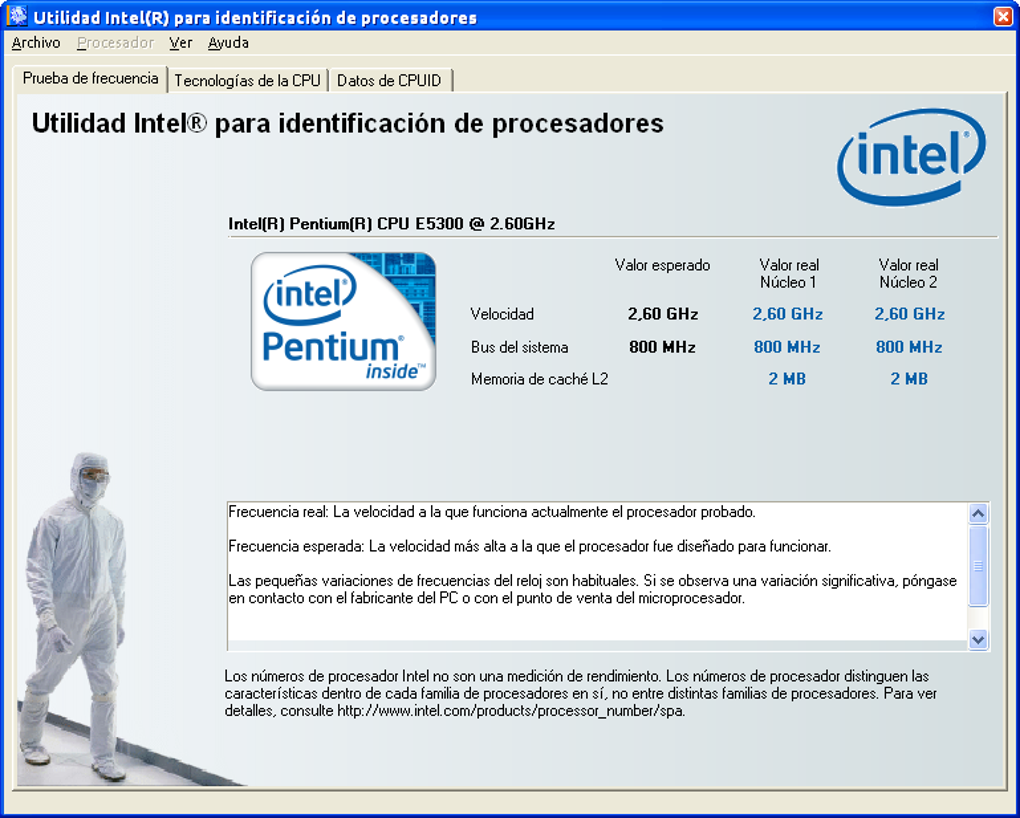

Intel Xeon Processor 5130 (4M Cache, 2.00 GHz, 1333 MHz FSB).

Intel Xeon Processor 5120 (4M Cache, 1.86 GHz, 1066 MHz FSB).Intel Xeon Processor 5110 (4M Cache, 1.60 GHz, 1066 MHz FSB).

Intel Xeon Processor 5080 (4M Cache, 3.73 GHz, 1066 MHz FSB). Intel Xeon Processor 5070 (4M Cache, 3.46 GHz, 1066 MHz FSB). Intel Xeon Processor 5060 (4M Cache, 3.20 GHz, 1066 MHz FSB). Intel Xeon Processor 5050 (4M Cache, 3.00 GHz, 667 MHz FSB). Intel Xeon Processor 5040 (4M Cache, 2.83 GHz, 667 MHz FSB). Intel Xeon Processor 5030 (4M Cache, 2.66 GHz, 667 MHz FSB). Intel Xeon Processor 3070 (4M Cache, 2.66 GHz, 1066 MHz FSB). Intel Xeon Processor 3060 (4M Cache, 2.40 GHz, 1066 MHz FSB). Intel Xeon Processor 3050 (2M Cache, 2.13 GHz, 1066 MHz FSB). Intel Xeon Processor 3040 (2M Cache, 1.86 GHz, 1066 MHz FSB). Identify older Intel Processors with the Intel Processor Frequency ID Utility. The Web Update link opens the default web browser on the system to the Intel Website containing the latest version of the Intel Processor Identification Utility. in a multiprocessor system) are appended to that log file. Multiple writes to the same log file (e.g. The utility asks for the filename and location in which to save the log file. The Save link generates a text log file containing all of the information obtained by the Intel Processor Identification Utility. The utility translates this instruction and uses it to display information about the processor. The CPUID Data section of the utility identifies Intel processors by reading a precise instruction embedded in the processor. The CPU Technologies section of the utility reads the internal registers of the processor to identify and display the Intel processor technologies that the processor supports. The utility then informs the user of the overall system status as a result of this comparison. The utility then examines internal data in the processor and makes a comparison between this data and the operating frequency it measured. The Frequency Test section of the Intel Processor Identification Utility runs a frequency determination algorithm (speed test) to determine at what internal speed the processor is running. The Intel Processor Identification Utility is not intended to identify microprocessors manufactured by companies other than Intel. The Web Update feature enables updating to the latest version of the Intel Processor Identification Utility. The Save feature enables the processor information to be saved into a text file. The CPUID Data section of the utility identifies the Intel processor(s) in the system. The CPU Technologies section of the utility displays the Intel processor technologies and features present in the selected processor. The Frequency Test section of the utility provides information regarding the operating status of the selected processor.










